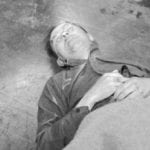 Creepy
Creepy  Creepy
Creepy  Technology
Technology 10 Scientific Breakthroughs of 2025 That’ll Change Everything
 Our World
Our World 10 Ways Icelandic Culture Makes Other Countries Look Boring
 Misconceptions
Misconceptions 10 Common Misconceptions About the Victorian Era
 Mysteries
Mysteries 10 Strange Unexplained Mysteries of 2025
 Miscellaneous
Miscellaneous 10 of History’s Most Bell-Ringing Finishing Moves
 History
History 10 Great Escapes That Ended Right Back in Captivity
 Weird Stuff
Weird Stuff 10 Fascinating Things You Might Not Know About Spiders
 Food
Food 10 Everyday Foods You Didn’t Know Were Invented by the U.S. Military
 History
History 10 Odd Things Colonial Americans Kept at Home
 Creepy
Creepy 10 More Representations of Death from Myth, Legend, and Folktale
 Technology
Technology 10 Scientific Breakthroughs of 2025 That’ll Change Everything
 Our World
Our World 10 Ways Icelandic Culture Makes Other Countries Look Boring
Who's Behind Listverse?

Jamie Frater
Head Editor
Jamie founded Listverse due to an insatiable desire to share fascinating, obscure, and bizarre facts. He has been a guest speaker on numerous national radio and television stations and is a five time published author.
More About Us Misconceptions
Misconceptions 10 Common Misconceptions About the Victorian Era
 Mysteries
Mysteries 10 Strange Unexplained Mysteries of 2025
 Miscellaneous
Miscellaneous 10 of History’s Most Bell-Ringing Finishing Moves
 History
History 10 Great Escapes That Ended Right Back in Captivity
 Weird Stuff
Weird Stuff 10 Fascinating Things You Might Not Know About Spiders
 Food
Food 10 Everyday Foods You Didn’t Know Were Invented by the U.S. Military
 History
History 10 Odd Things Colonial Americans Kept at Home
10 Men Who Killed Their Families
We generally spend lots of time with our families, so it’s easy to understand why we get irritated and angry with them at times. In general, such moments pass, and no one is left hurt. But what could make someone upset enough that they would turn to murder?
In this list, we investigate that question: What would cause a man to flip and kill his family? As the following ten cases show, the answer is sometimes elusive.
10 Charlie Lawson
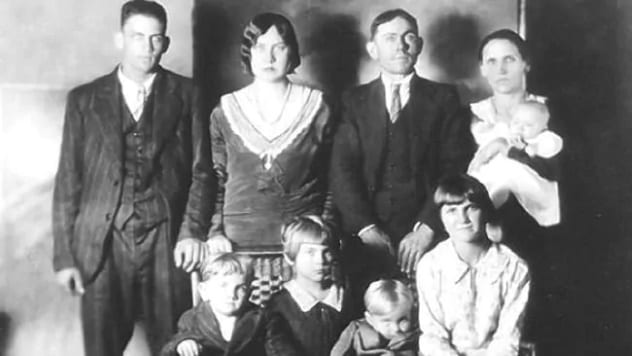
It was a strange occurrence for a working-class, rural family in 1929 to come into town to buy new clothes for a professional family portrait to be taken, but Charlie Lawson, a “well-to-do” farmer, did exactly that just days before Christmas for his wife and seven children. Days later, though, his act seemed all the more strange and disturbing when Lawson shot and killed almost his whole family and then himself on Christmas Day.
First, he shot his daughters Carrie, 12, and Maybell, seven, with a 12-gauge shotgun as they were setting out for their aunt and uncle’s house. Then, he bludgeoned them and placed their bodies in the tobacco barn. Next, he approached the house and killed his wife Fannie, who was sitting on the porch. His children inside attempted to hide, but he caught and shot his daughter Marie, 17, and her two brothers James, four, and Raymond, two. His four-month-old daughter Mary Lou was the last to be killed, bludgeoned to death in her crib. He then dragged their bodies to the tobacco barn, crossed their arms, and placed rocks under their heads before walking into the woods of the property.
Lawson’s sixteen-year-old son Arthur was the only surviving member of the family, having been sent into town on an errand by Lawson earlier that day. And as Arthur, a police officer, and others approached the house, they heard the gunshot of Charlie Lawson killing himself.
The exact reason why Lawson flipped and killed his whole family was never known. Some theorized that a head injury he had sustained months earlier caused a shift in his personality.[1] Others believe that he was having an incestuous relationship with his eldest daughter Marie and had gotten her pregnant, killing the family in order to cover his sins.
9 George Emil Banks
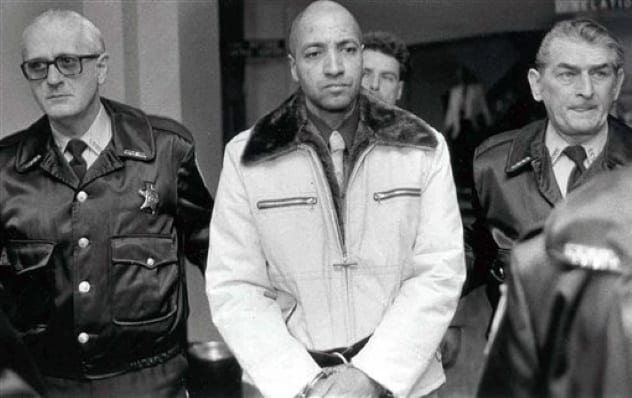
Dressed in military fatigues and inebriated off straight gin and prescription pills, George Emil Banks used an AR-15 semiautomatic rifle to kill eight people in his home on Schoolhouse Lane in Wilkes-Barre, Pennsylvania, on September 25, 1982.
Five of the victims were children, four of whom were his, and the three others were his girlfriends and mothers to his children.[2] He then went outside, where he shot at two neighbors, killing one, before driving away to the Heather Highlands mobile home park, where his former girlfriend Sharon Mazzillo and their son Kissmayu lived. Upon forcing entry into the home, he shot Mazzillo, went into the bedroom and shot and killed their sleeping son, and then shot Mazzillo again as she was trying to call the police, ultimately killing her, before also shooting and killing her sister and seven-year-old nephew, who were also there, bringing the final death toll to 13. Unknown to Banks, Mazzillo’s brother was hiding in the closet of the mobile home, and he called the police.
After getting Mazzillo’s brother’s report, police connected the attack at the mobile home with that on Schoolhouse Lane and began a manhunt for Banks. While police were investigating the scenes, though, Banks was on the run, abandoning his car, stealing another, and then ditching that one in a field. He then visited his mother. He confessed what he’d done, and she called his home on Schoolhouse Lane, where police answered. They talked to Banks on the phone, trying to keep him on the line until they could get someone to his mom’s house to arrest him, but he hung up, grabbed more ammunition, and then drove to the vacated home of a friend.
There, a standoff between Banks and police began. It took eight hours and various tactics by the police, including bringing his mother and a former coworker to the scene to try to talk him out and playing a false news report over the radio claiming that the children were still alive and needed blood, before Banks came out. He was charged and held without bail until his sentencing, where he was found guilty of 12 counts of first-degree murder, one count of third-degree murder, attempted murder, and aggravated assault, as well as robbery, theft, and endangering the life of another person. The death penalty was recommended by the jury, but he was ultimately found mentally incompetent for execution, and he is currently being held in Graterford Prison.
8 James Urban Ruppert
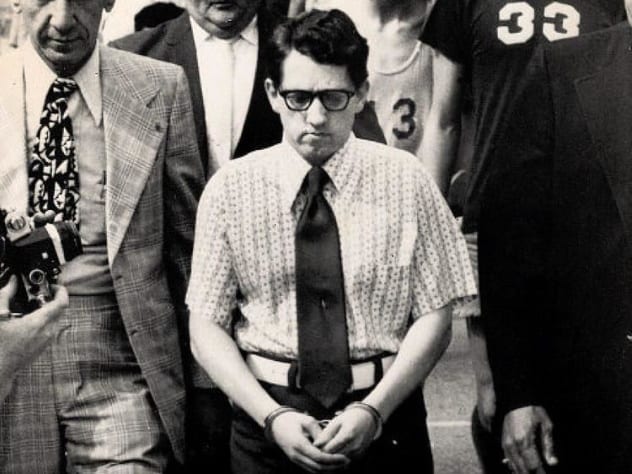
James Urban Ruppert was described as unremarkable and quiet. A modest, bookish man, he lived at home with his mother Charity, was unemployed, and had never married. In comparison, his older brother Leonard Jr. had married James’s ex-girlfriend, had eight children and a successful career, and owned his own home.
Charity and Leonard Jr. were frustrated with James’s behavior. He was constantly borrowing money from them to make bad investments and to go to the pub down the street. Charity had threatened multiple times to kick James out of the house, and the night before Easter Sunday 1975, her threats became serious, and James stormed off to his favorite pub to drink and vent his frustrations with his family to anyone who would listen.
The next day, James, hungover and not wanting to be social, slept in while Leornard Jr. and his family came over to the house to have Easter dinner and an egg hunt. At around 6:00 PM, James loaded a .357 Magnum, two .22-caliber handguns, and a rifle and went downstairs. He shot his mom, brother, sister-in-law Alma, his nephew David, and his nieces Teresa and Carol, who were all in the kitchen. He then entered the living room, shooting his other niece Ann and his four other nephews: Leonard III, Michael, Thomas, and John.[3]
In total, he killed all 11 members of his family in the house within five minutes.
Ruppert was initially uncooperative with police when they came upon the scene, though he telephoned them to report the shooting. He was taken into custody, and after a mistrial, a retrial, and an appeal, he was found guilty of two counts of first-degree murder for his mother and brother but found not guilty on the other nine counts of murder due to reason of insanity. He is currently serving two consecutive life sentences at the Allen Oakwood Correctional Institution in Lima, Ohio, and has a parole hearing set for April 2025, when he will be 91 years old.
7 Abel Clemmons

Claiming that he feared his children would starve and that a higher power he could not resist called to him, Abel Clemmons (some sources spell it “Clemmens”) did the unthinkable in November 1805 and murdered his five-months-pregnant wife and their eight small children by striking each one on the head with an ax while they slept in their beds.[4]
The next morning, a neighbor named Neisly, who had purchased some of Clemmons’s land, stopped by and saw that Clemmons was in a state of extreme agitation. However, Neisly did not think anything was overly suspicious about Clemmons’s behavior and assumed that the family was still asleep, as he had arrived at the house in the early morning.
Later in the day, however, Clemmons’s brother came to the house. Upon only finding Clemmons up, he investigated and found Clemmons’s wife dead in the bed holding an infant child and then the other children dead in their rooms. He accused his brother and ran to the neighbors, while Clemmons fled to a rocky area in the forest.
After days of hiding, Clemmons, claiming grief and hunger, left his post and gave himself up to police. He pleaded not guilty, but was tried, found guilty, and sentenced to be hanged. In 1806, he was hanged from a locust tree near Decker’s Creek in Morgantown.
6 George Jefferson Hassell

George Jefferson Hassell had a very checkered past. He had been married six times, deserted from the Army, and been involved in embezzlement. He was also the only witness to his brother’s death, which he claimed was due to a mule kick to the head. After his brother’s death, he married his brother’s widow Susie and moved her and her eight or nine (sources vary) children to his farm in Farwell, Texas.
Then, on December 8, 1926, Susie accused him of a very horrific crime: molesting her daughter—his niece and stepdaughter.
This caused Hassell to snap. He hit Susie in the head with a ball-peen hammer repeatedly until she died. Then, he used a straight razor and stockings to stab and choke each of the children in their beds, from oldest to youngest. His oldest stepson was not home at the time, and Hassell killed him days later with a shotgun as he sat with his back to Hassell at the kitchen table.[5]
He put all the bodies in a newly dug root cellar by the house and started auctioning off the family’s belongings, telling neighbors that his wife and children had moved to Oklahoma. They didn’t believe him, though, and soon, police suspicion was aroused.
After the bodies were discovered, Hassell tried to stab himself in the heart, but the attempt was half-hearted, and he was taken into custody, tried, and sentenced to death by the electric chair.
Weeks before he was set to be executed, he confessed to killing a former girlfriend, Marie Vogel, and her three children ten years previously. He said that after the United States entered World War I, he quarreled with Vogel over him enlisting. In his anger, he clubbed and choked Vogel before doing the same to her three children: a boy of eight, a girl of five, and a one-year-old infant. He then hid their bodies under their house in Whittier, California.
On February 10, 1928, George Jefferson Hassel was electrocuted at the Huntsville State Penitentiary. He received three shocks and died in eight minutes, making him the 37th man to be put to death in the electric chair in Texas.
5 Ronald Lee Haskell
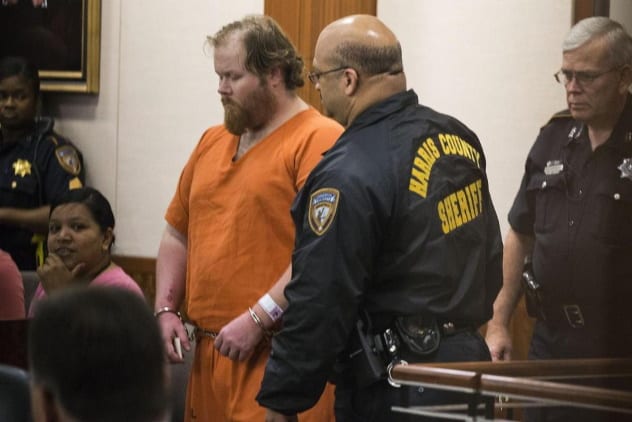
After Ronald Lee Haskell dragged his wife Melanie Kaye Lyon out of bed and hit her on the side of the head in front of their children, she got a protective order against him and filed for divorce. She moved to Harris County, Texas, where her sister Katie Stay lived with her five children. Melanie hoped that her years of abuse by Haskell were finally coming to an end.
On July 9, 2014, however, Haskell would cause more pain for Melanie by going after her family.
Dressed as a FedEx employee, Haskell approached Katie’s house, and her 15-year-old daughter Cassidy answered the door.[6] Not recognizing Haskell as her ex-uncle, she told him that her parents were not home and closed the door. Haskell returned a few hours later, telling Cassidy that he was her ex-uncle and then forcing his way into the house. He tied her and her four siblings up and made them all lie facedown on the floor. When their parents returned home for the day, he did the same to them, repeatedly asking them where his ex-wife was. No one in the family told him where Melanie was, and he shot each one in the back of the head “execution-style” before fleeing the scene in his family’s car.
Six victims, Stephen, Katie, Bryan, Emily, Rebecca, and Zachary, died, with Cassidy being the only one who survived by playing dead after being hit by the bullet. She was able to phone police, identify Haskell, and tell them that he was going after her grandparents next. Police found Haskell near the grandparents’ house in Spring, Texas, and after a three-hour standoff, they apprehended Haskell.
Haskell was charged with six counts of capital murder and is set to face the death penalty after his next trial.
4 Simon Peter Nelson
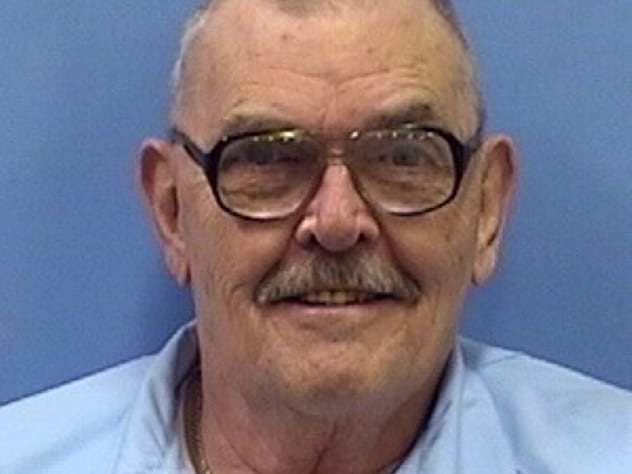
In January 1978, after receiving a call from Ann Nelson in Milwaukee, Wisconsin, that her husband, Simon Peter Nelson, may have harmed their children, officers of the Rockford, Illinois, police department checked the perimeter of the house before jimmying a window open on the front porch to get inside. They climbed into a grisly scene.
The throats of the six Nelson children had been slit by a hunting knife, and their heads had been smashed by a rubber mallet. Their dachshund Pretzel had received the same fate.[7]
After killing the children, Nelson drove to Milwaukee to attack his wife, who had been planning to divorce him and was staying with her sister while she contemplated the relationship.
Nelson was sentenced to 100 to 200 years in prison for the murders. Due to the indeterminate sentencing system of the time, he was eligible for parole every one to five years but was denied over 15 times before his death in 2017 at the age of 85.
3 Mesac Damas
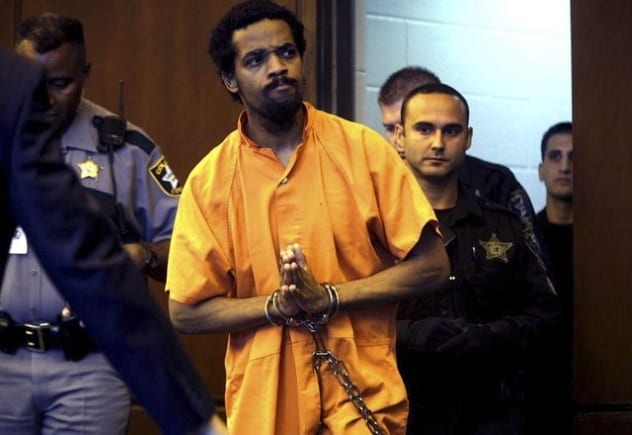
Following a fight the night before, Mesac Damas followed his wife Guerline to her grocery store job on the morning of September 17, 2009. Upon realizing she was being followed by her husband, Guerline confronted Damas, and an argument ensued. When she returned home from work that evening, she would not speak to Damas except to tell him that she would be leaving him and to ask him to sign some immigration papers for her.
Little did she know, though, that Damas had been thinking about their fight all day, to the extent that he had to leave work early. On his way home, he had stopped at a local supermarket to purchase a fillet knife and a roll of duct tape, and upon hearing Guerline say she was divorcing him, he grabbed the knife and tied her up with the duct tape.
Days later, while performing a welfare check on the house, police would discover Guerline in a small bathroom, facedown in a pool of her own blood. She had a deep, extensive knife wound to her left shoulder and neck and had been bludgeoned in the right eye.
Officers continued to search the house and found the bodies of the five Damas children stabbed in their bedrooms upstairs.
Before the bodies were discovered, Damas fled to Haiti to say goodbye to his family. He was apprehended by US Marshals on September 23, 2009. He was transported back to the United States and held without bond. After many delays due to the questioning of his competency to stand trial, he was charged with six counts of first-degree murder. On September 5, 2017, he entered a guilty plea and was sentenced to death.[8]
2 David Ray Conley
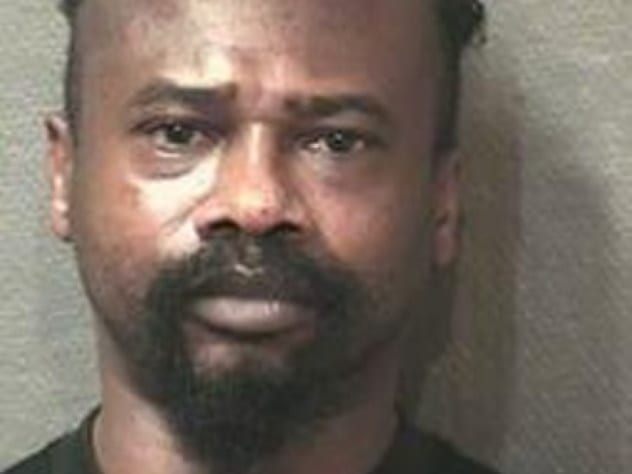
Though the morning of August 8, 2015, started just like any other for Valerie Jackson, it would come to a terrifying and fatal end when her ex-boyfriend David Ray Conley broke into her Harris County, Texas, home through an unlocked window. He was angry with the way Jackson was raising their son and that her ex-husband and father to her other children had moved back into the house he used to live in.
Waving a 9-milimeter handgun, he forced Jackson, her six children, and her husband into the master bedroom, where he handcuffed them and tied them all to the bed. Over the course of the next nine hours, Conley allegedly shot Jackson’s husband and then each of her children in the back of the head, making her watch each murder, until he finally killed her.
During a moment of distraction for Conley, Jackson was able to text her mother and tell her that they were being held hostage by Conley. Jackson’s mother contacted police, who did three wellness checks on the house, getting no response from inside and not being able to barge in without a warrant. On the fourth check, they saw a body lying near a window and used that as reasonable cause to enter the house. Immediately, they were shot at by Conley and forced to retreat while they waited for backup. Conley surrendered within an hour.
Though the court proceedings are still continuing for this case, Conley was charged with three counts of capital murder, and prosecutors are seeking the death penalty, while his defense is looking to put in a mental insanity plea.[9]
1 John Hoskins
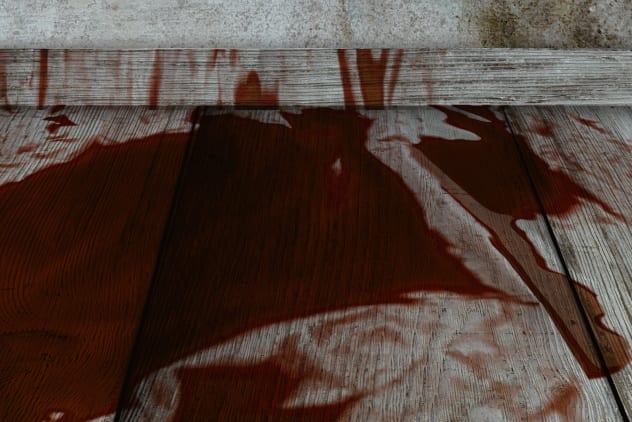
On the morning of January 11, 1919, four children sat around the breakfast table of their home in Iowa as John Hoskins, father to Irene and Merlin, and Hulda, mother to Roy and Gladys, began to fight. Although it was not an unusual occurrence for Hoskins to be in a bad mood and take it out on his family, today was different than the others.
As Hulda left the house for the barn, Hoskins went to the back porch, grabbed a wooden buggy axle he used to mix hog feed, walked over to his stepdaughter Gladys, and struck her over the head.[10] Before Roy could even make a move, Hoskins clubbed his stepson over the head, as well. His two children, Irene and Merlin, jumped from the table and ran outside.
Hoskins easily caught up with Irene and hit her on the head, too. She stumbled, but the wound was not fatal, and she ran to a nearby neighbor’s house for help.
After striking Irene, Hoskins spotted Merlin running through the field and called out to the boy to tell him to ride to his uncle’s house and tell him what had happened. Terrified, Merlin obliged.
As he rode away, Hoskins re-entered the house and delivered more blows to the skulls of his stepchildren to make sure they were dead. As he was finishing, Hulda walked in, and he swung at her with the wagon axle, delivering numerous fatal blows. She crawled out to the porch, where she would eventually succumb to her injuries.
When authorities and neighbors arrived, Hoskins had superficially slit his throat and wrist with a straight razor in an unsuccessful attempt to kill himself. He was immediately taken into custody and eventually brought to trial. He showed no remorse for his actions and pleaded guilty to murder.
Irene and Merlin were sent to live with their grandparents, and when Hoskins was granted parole after his original sentence was commuted, he went to live with Irene in California.
Tracy spends her days writing and designing in a tourist town where she lives with her dog.
Read about more terrifying murders of families on 10 Shocking Cases of Parents Murdering Their Families and 10 Tragic Unsolved Cases Of Murdered Families.







